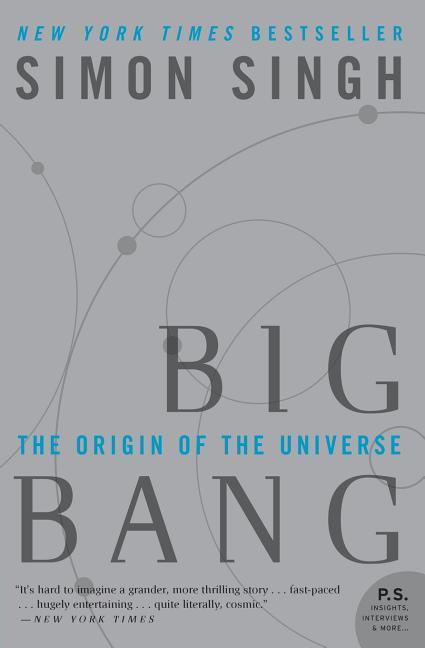Big Bang : The Origin Of The Universe by Simon Singh

A little over fifty years ago, an attention-grabbing headline from the Washington Post made a controversial claim – that the world came into existence in a mere five tumultuous minutes, instead of having been present for eternity. At the time, a skeptical scientist referred to this unorthodox theory as the Big Bang. In his incredibly accessible account of the universe’s evolution, Simon Singh unravels the enigma surrounding the Big Bang theory, taking us on a journey through the progression of one of the most remarkable, significant, and breathtaking ideas in the realm of science.
The Big Bang: Discovering Relics of the Early Universe
In the field of physics, you will encounter various topics such as nuclear physics, particle physics, and cosmology. What’s interesting is that these seemingly separate areas of study are actually interconnected.
One example of this connection is the theory surrounding the early stage of the universe, known as the Big Bang. It was theorized that during this event, there was an immense amount of heat, pressure, and energy. Consequently, the particles in the early universe, specifically electrons and protons, were unable to form stable atoms because the electrons would be immediately scattered by the intense conditions. As a result, the universe was in a state of plasma, with photons bouncing off electrons and protons.
Imagine being present in this early stage of the universe. Due to the constant scattering of photons, visibility would have been virtually zero. The universe was shrouded in a thick fog, a plasma-like soup of particles. However, after a few hundred thousand years, as the universe cooled down, electrons were able to bind to protons, forming neutral atoms.
Once neutral atoms were present, photons could travel through the universe without being scattered. This marks the moment when the fog cleared, and light could freely traverse.
In the 1940s, three American physicists, Robert, Herman, and Alpha, theorized that if the Big Bang theory were true, the intense light released a few hundred thousand years after the event would still be detectable today. However, the technology to observe these light waves, specifically microwaves, was not available at that time.
It wasn’t until the 1960s that Penzias and Wilson, two radio astronomers in America, accidentally stumbled upon evidence of the Big Bang. While observing stars and galaxies with their radio telescope, they realized that there was a persistent microwave signal coming from all directions. After weeks of investigation, they concluded that they had discovered the faint echo of the Big Bang.
This accidental discovery was crucial in confirming the reality of the Big Bang. It demonstrated the importance of making predictions in physics. Theorizing alone is not sufficient; it is essential to back up those theories with verifiable evidence. In this case, the prediction that the Big Bang would generate microwaves was confirmed by the detection of these microwaves.







Leave a Reply